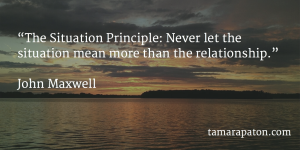

One of the great benefits of serving on multiple boards is the opportunity to apply learning from one environment to another. It’s even better when a colleague’s stumble in one setting helps you avoid face-planting elsewhere.
I attended a meeting this week that started off all wrong. A consultant who supports one of my board committees floundered before we even got started. The purpose of the meeting wasn’t clear. The prepared materials were vague and wandering. And when directors sounded the alarm via email, the advisor went silent for days.
At first, it was frustrating to witness the confusion, but then my concern started to grow. After all, I am set to co-lead a delicate discussion for another board next week. How can I be so sure that I won’t make the very same mistakes?
As I prepare for my own moment in the hot seat, I’m thoughtful about how and what I communicate. The way an idea is presented to my fellow directors will determine its traction and longevity at the board table. To give my proposal its best shot, I’m using three communication building blocks when preparing the advance materials and agenda.
Set context
Before launching into an idea, it helps to ground the discussion in history. Remind others of how a topic evolved to this point. Highlight past lessons learned, and revisit how the idea fits into other initiatives underway.
Once the past is understood, I then turn to motivation. What circumstances make this the right time to explore the opportunity? What risk must we accept if we were to delay the discussion?
Explore the common ground
A group may wish to dive into the details at this point, but try to delay, if possible. Framing the situation in terms of what conditions must be true is valuable here. The discussion can reveal people’s priorities and biases before they dig in their heels. And groups often expose less obvious ripple effects that deserve consideration.
Make the pitch
After laying this groundwork, only then do I explore the idea itself. Pre-read materials should clearly define the opportunity and its implications. In the days leading up to a meeting, it helps to verify understanding by checking in with participants via phone or email. Once together, the group can dedicate its time to evaluating trade-offs and exploring the implementation details.
This approach may seem obvious to you, but leaders frequently get it wrong. I often find myself breezing past the foundational steps in an attempt to work quickly. The net result is far from efficient, however, as confusion bogs down discussions and good ideas die on the table. Fortunately, we can give proposals their best shot by thoughtfully structuring our own communication and the way we engage others.
Question: What do you do to boost a proposal’s odds of success?
Please share your response via Twitter, LinkedIn or e-mail.
Thank you for reading! If you found this post useful, please click the “like” button on LinkedIn and/or share it with others in your network. Doing so helps my work reach others and would mean so much to me.










